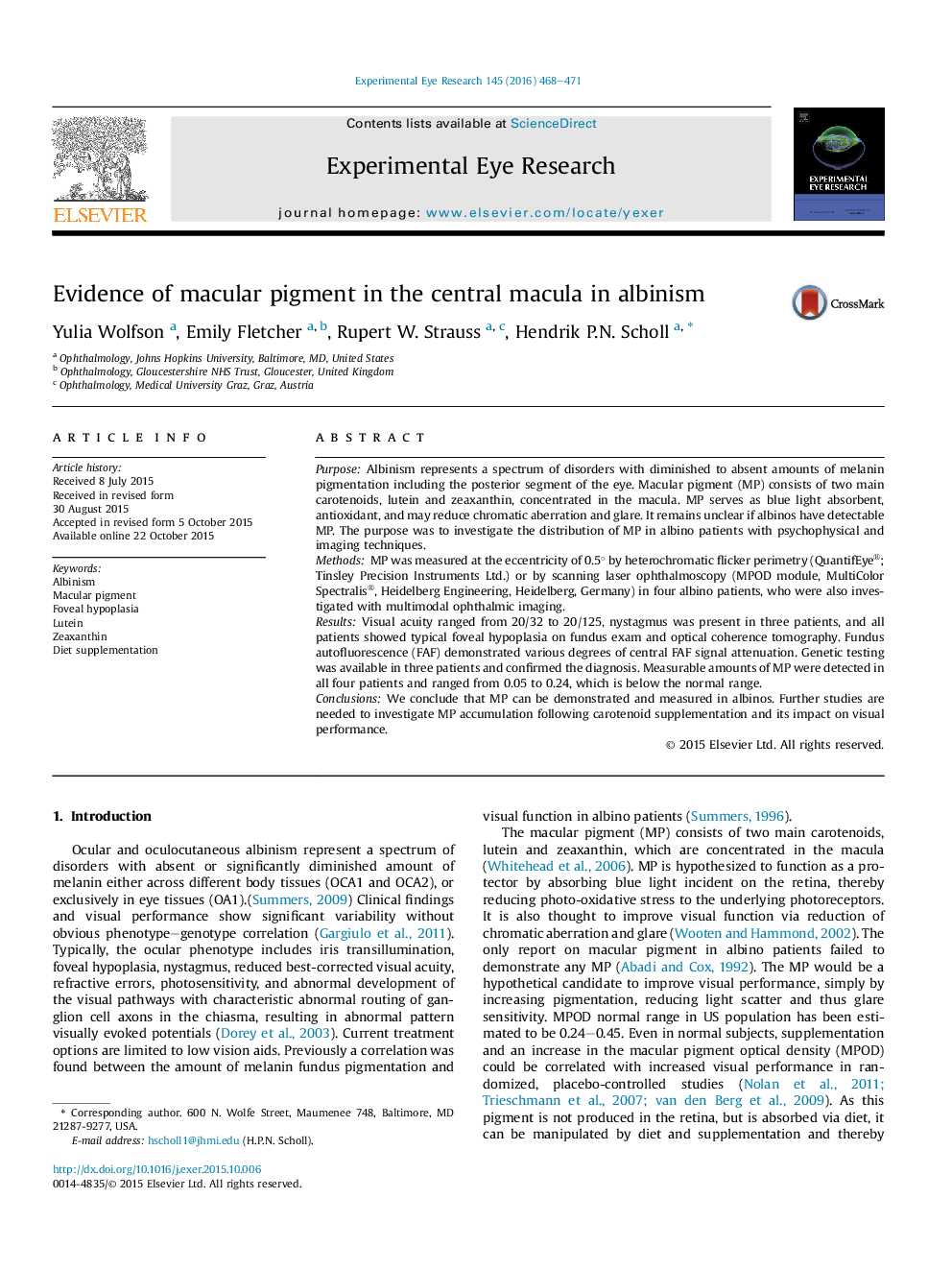| Article ID | Journal | Published Year | Pages | File Type |
|---|---|---|---|---|
| 6196531 | Experimental Eye Research | 2016 | 4 Pages |
PurposeAlbinism represents a spectrum of disorders with diminished to absent amounts of melanin pigmentation including the posterior segment of the eye. Macular pigment (MP) consists of two main carotenoids, lutein and zeaxanthin, concentrated in the macula. MP serves as blue light absorbent, antioxidant, and may reduce chromatic aberration and glare. It remains unclear if albinos have detectable MP. The purpose was to investigate the distribution of MP in albino patients with psychophysical and imaging techniques.MethodsMP was measured at the eccentricity of 0.5° by heterochromatic flicker perimetry (QuantifEye®; Tinsley Precision Instruments Ltd.) or by scanning laser ophthalmoscopy (MPOD module, MultiColor Spectralis®, Heidelberg Engineering, Heidelberg, Germany) in four albino patients, who were also investigated with multimodal ophthalmic imaging.ResultsVisual acuity ranged from 20/32 to 20/125, nystagmus was present in three patients, and all patients showed typical foveal hypoplasia on fundus exam and optical coherence tomography. Fundus autofluorescence (FAF) demonstrated various degrees of central FAF signal attenuation. Genetic testing was available in three patients and confirmed the diagnosis. Measurable amounts of MP were detected in all four patients and ranged from 0.05 to 0.24, which is below the normal range.ConclusionsWe conclude that MP can be demonstrated and measured in albinos. Further studies are needed to investigate MP accumulation following carotenoid supplementation and its impact on visual performance.
